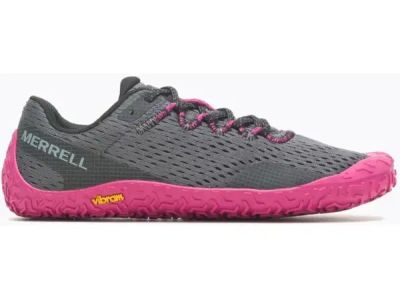Barefoot and minimalist footwear has gained popularity in recent years due to the more natural and unrestricted experience of walking or running. These shoes are designed to mimic the feeling of bare feet while providing some protection and support. Barefoot shoes are characterized by a lightweight, flexible, and low-profile construction. They typically have a thin sole, minimal cushioning, and a wide toe box that allows the foot to move naturally. The upper of the shoe is usually made of breathable materials that provide a snug, comfortable fit.
What features do barefoot shoes have?
This shoe is characterized by the following features:
- Thin and flexible sole: The sole of barefoot shoes is usually thin, ranging from 3 to 8 millimetres thick. This allows for better ground feel and promotes proper foot mechanics.
- Wide toe space: Unlike traditional footwear, which often squeezes the toes together, barefoot shoes have a wide toe space that allows the toes to spread naturally. This promotes better balance, stability, and toe alignment.
- Minimal cushioning: Barefoot shoes have minimal cushioning that supports the foot's natural shock absorption and proprioception. This can help strengthen the foot and lower leg muscles over time.
- Weight and breathability: Barefoot shoes are lightweight and often made of breathable materials, such as mesh or lightweight fabrics. This promotes airflow and helps keep feet cool and dry.
What are the main benefits of wearing barefoot shoes?
Wearing barefoot shoes has the following benefits:
- Improves foot strength and flexibility: By allowing the foot to move naturally, barefoot shoes help strengthen the muscles and ligaments of the feet, promoting better foot health and flexibility.
- Better balance and stability: The wide toe space and low-profile design of barefoot shoes can improve balance and stability, as well as proprioception (awareness of body position and movements).
- Supports proper foot mechanics: Barefoot shoes support midfoot or forefoot strike, promoting a more natural and efficient movement when running or walking.
- Increased sensory feedback: Thanks to a thinner sole, barefoot shoes provide a better connection to the ground, allowing for better sensory feedback and better perception of the terrain.
- Versatile: Barefoot shoes are suitable for a variety of activities including walking, running, hiking, and working out at the gym. They can also be used for water activities such as swimming or paddleboarding.
Barefoot shoes can be worn by people of all fitness levels. However, it is important to transition to barefoot shoes gradually, especially if you are used to traditional shoes with more cushioning and a higher sole. Start by wearing them for short periods of time and gradually increase the amount of time you wear them to allow the muscles in your leg and foot to adapt. It is also essential to listen to your body and adjust your use based on comfort and any signs of discomfort or pain.

